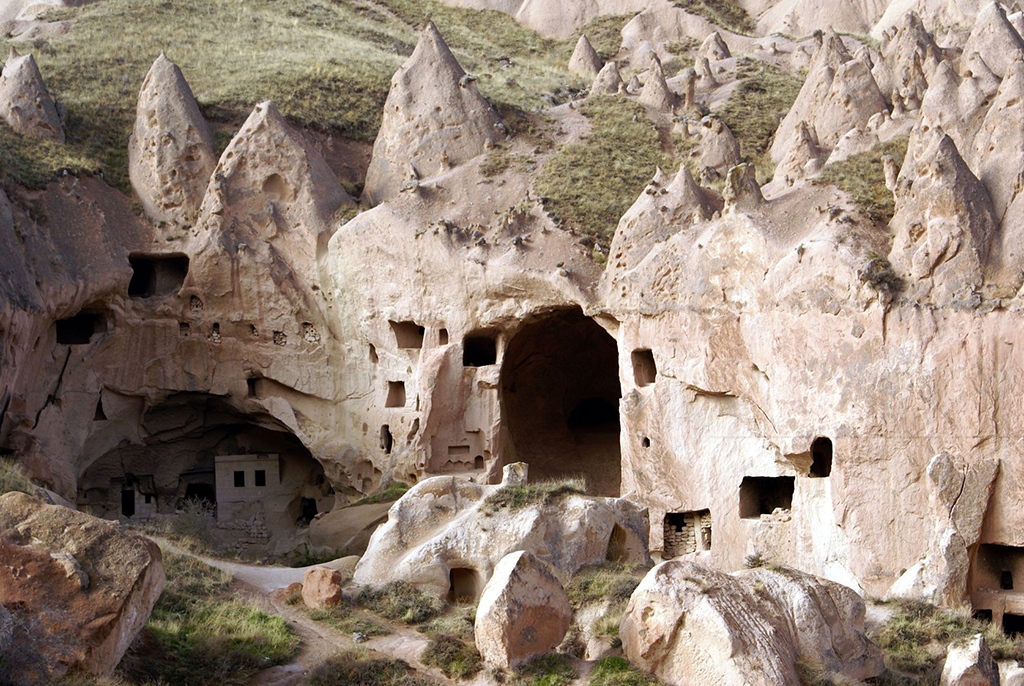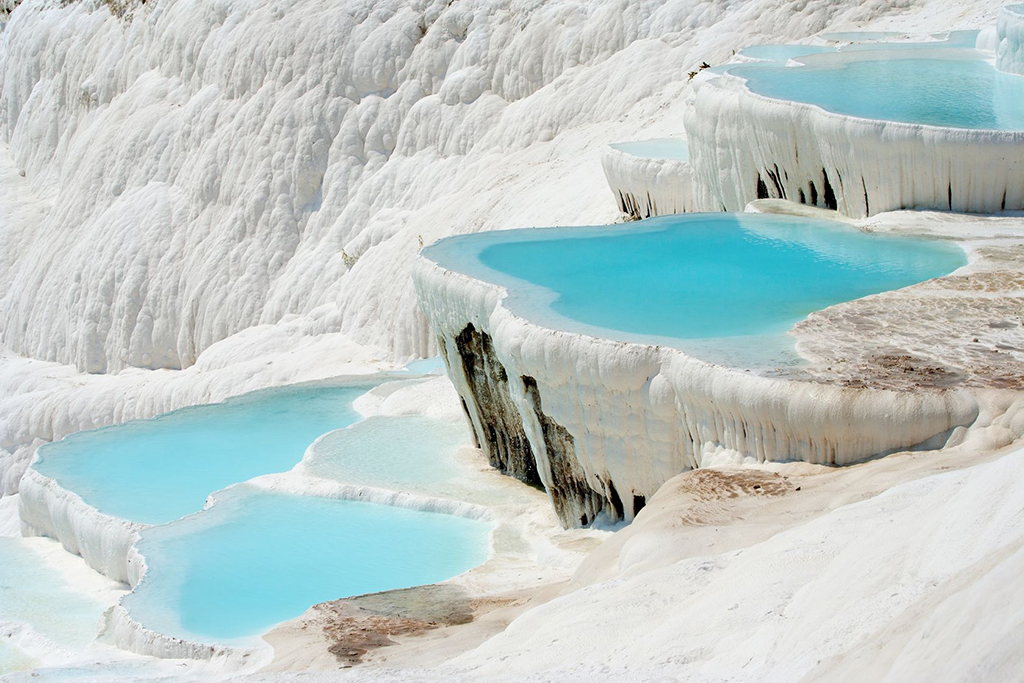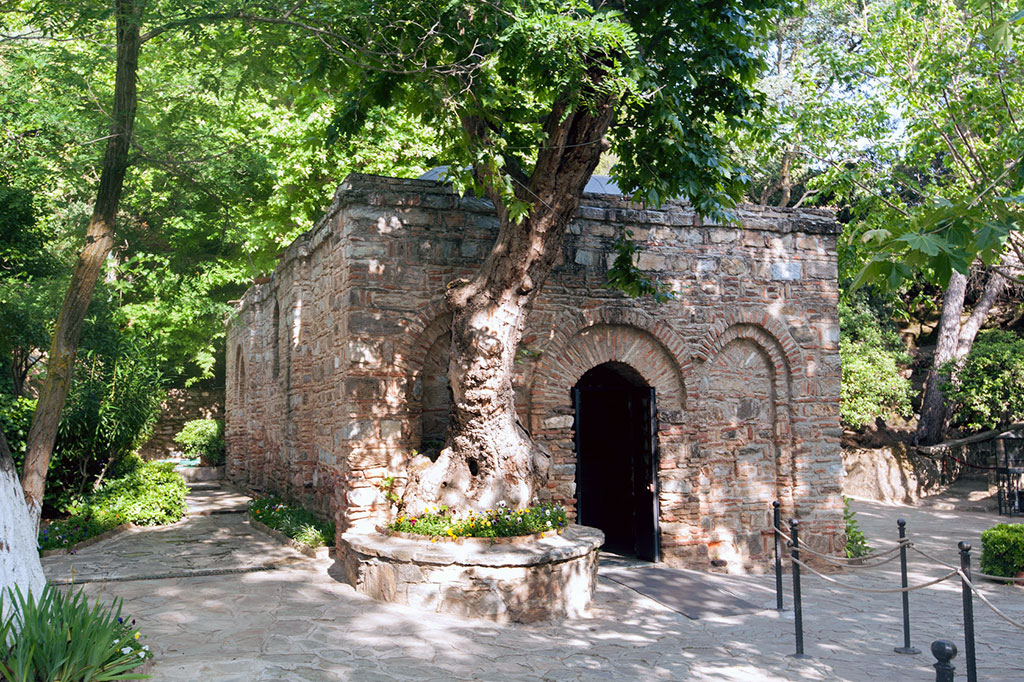JOURNEY IN THE FOOTSTEPS OF ST PAUL & THE CHURCHES IN THE BOOK OF APOCOLYPSE 13 days 11 nights in Turkey / November 2014 / June 2015
St Peter Church, Antakya
According to history, early Christians held their worship services secretly in this 13-meter-deep (43-foot) cave, now called the Saint Peter Church (Senpiyer Kilisesi),2.5 km northeast of the center of Antakya. It was here, they say, that St Peter was selected as the leader and “first bishop” of the church.
The interior of the grotto church is austere and simple. The only permanent furnishings are a small altar, a single statue, and a stone throne. On the walls are the barely discernible remains of frescoes, and on the floor can be seen some traces of mosaics. In the back of the church is a tunnel that leads into the mountain interior, popularly believed to be a means of escape in times of persecution.
Cappadocia
In the 4th century, Cappadocia was coined the Land of 3 Saints because of 3 remarkable theologians: St Basil, St Gregory of Nyssa and St Gregory of Nazianzus. They are collectively known as The Cappadocians, and contributed a great deal to Christian doctrine and Eastern Orthodox.
Cappadocia is Turkey’s most visually striking region, especially the “moonscape” area around the towns of Ürgüp, Göreme, Uçhisar, Avanos and Mustafapaşa (Sinasos), where erosion has formed caves, clefts, pinnacles, “fairy chimneys” and sensuous folds in the soft volcanic rock.
Göreme
Cappadocia’s most famous attraction, for good reason, is the Göreme Open Air Museum, a complex of medieval painted cave churches carved out by Orthodox monks. The Open Air Museum is located in Turkey’s Göreme Valley, a 15-minute walk (1.5 km/1 mile) from Göreme and a short ride (6.5 km, 4 miles) from Ürgüp. St. Basil was instrumental in developing Christian monasticism, of which these cave churches in his homeland are a product. The monastic complex at Göreme was carved out and decorated between 900 and 1200.
Pamukkale Limestone Pools
Pamukkale, meaning “cotton castle” in Turkish, is a natural site in Denizli Province in southwestern Turkey. The city contains hot springs and travertines, terraces of carbonate minerals left by the flowing water. It is located in Turkey’s Inner Aegean region, in the River Menderes valley, which has a temperate climate for most of the year. In the terraces are the sediments of the springs with calcium bicarbonate in 33C. Waters, containing mainly calcium salts and carbon-dioxide, run off the plateau’s by depositing calcium while carbon-dioxide disappearing. The marvelous landscape of Pamukkale has been created by this gradual formation, leaving a cotton-like image. Located above the theatre of Hierapolis, the mineral water sources from the thermal springs of Cal Mountain. It is collected in a pool, known as the “Sacred Pool” of ancient times, where you can swim amidst the historical remains of Hierapolis. The Sacred Pool is now located inside Pamukkale Hotel.
The Basilica of St. John
The Basilica of St. John (St. Jean Aniti) was a great church in Ephesus constructed by Emperor Justinian in the 6th century. It stands over the believed burial site of St. John, who is identified as the apostle, evangelist (author of the Fourth Gospel) and prophet (author of Revelation). The basilica is on the slopes of Ayasoluk Hill near the center of Selçuk, just below the fortress and about 3.5 km (2 miles) from Ephesus.
There was a St. John identified wih Ephesus since as early as the 1st century, who seems to have originally been the author of Revelation who was exiled on Patmos. By the second century this John was equated with John the Evangelist, author of the Gospel of John (presumed also to be the same person as John the Apostle, beloved disciple of Jesus).
Legend had it that John wrote his gospel in Ephesus at the request of other disciples, then died in the church named for him on Ayasoluk Hill. Later legends developed that he was not really dead, but sleeping, and dust could even be seen moving above his grave as he breathed.
House of the Virgin Mary
The House of the Virgin (Meryemana in Turkish), located in a nature park between Ephesus and Seljuk, is believed to be the last residence of the Virgin Mary, mother of Jesus. The peaceful site is sacred to both Christians and Muslims, and is visited by many tourists and pilgrims.
According to predominant Christian tradition, Mary was brought to Ephesus by the Apostle John after the Resurrection of Christ and lived out her days there. This is based mainly on the traditional belief that John came to Ephesus (see St. John’s Basilica) combined with the biblical statement that Jesus consigned her to John’s care (John 19:26-27).
Archaeologists who have examined the building identified as the House of the Virgin believe most of the building dates from the 6th or 7th century. But its foundations are much older and may well date from the 1st century AD, the time of Mary. This site had long been a place of pilgrimage for local Orthodox Christians.










